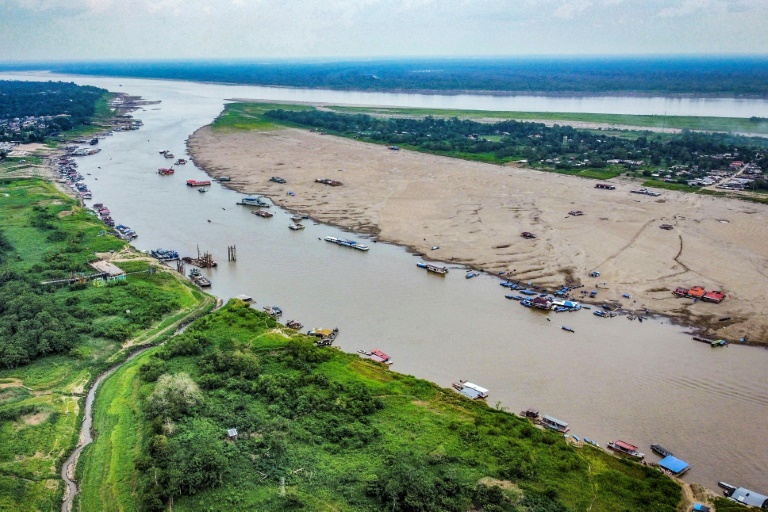Water levels in Colombia’s Amazon River have fallen by as much as 90 percent, a government agency said Thursday, as South America faces severe and widespread drought.
The river – the largest in the world by volume and which also flows through parts of Brazil, Peru, Bolivia, Ecuador, Venezuela, Guyana, French Guiana and Suriname – has been hit hard by the drought that has caused forest fires to spread across the continent.
“Water levels have dropped between 80 and 90 percent over the past three months due to drought caused by climate change,” Colombia’s National Disaster Risk Management Unit (UNGRD) said in a statement.
The lack of water particularly affected indigenous communities who rely on the river for food and transportation, it added.
AFP has seen boats stranded in recent days around Leticia, the capital of the southern state of Amazonas, where large areas of land are exposed to low water levels.
The city, near the borders with Brazil and Peru, is a crucial trading post along the Amazon.
According to residents, this is the worst drought in at least half a century.
Europe’s Copernicus Atmosphere Monitoring Service said this week that wildfire activity in South America is “significantly above average” this year, especially in the Amazon and the Pantanal wetlands.
Fires are burning in Colombia, Peru, Ecuador, Brazil and Bolivia.
Ecuador, which relies on hydropower, is facing severe energy shortages due to its worst drought in six decades. It has implemented rolling power cuts and put 20 of 24 provinces on red alert.
In Brazil, thick plumes of smoke have clouded major cities such as Brasilia, Rio de Janeiro and Sao Paulo, sometimes sending fumes across the border into Argentina and Uruguay.
The Colombian capital Bogota has been rationing municipal water for months.
das/lv/mlr/des







